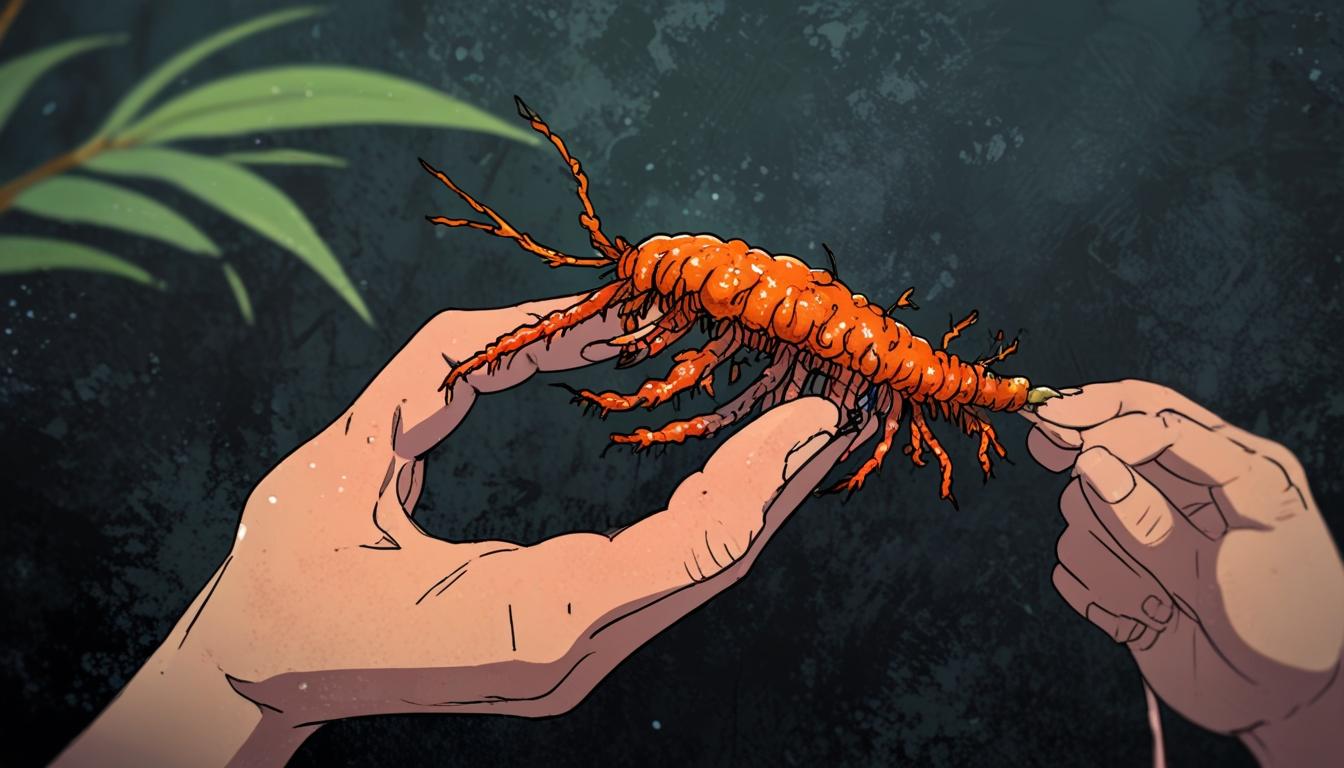The popular TV series The Last Of Us depicts a fungal pandemic with zombie-like effects, drawing on real scientific concerns about fungal pathogens and their potential threat to human health, especially in the context of climate change.
The popular post-apocalyptic television series The Last Of Us, currently airing its second season on Sky Atlantic and starring Pedro Pascal and Bella Ramsey, explores a fictional public health crisis caused by a widespread fungal pandemic. The series imagines a world devastated by a mass outbreak of a parasitic fungus called cordyceps, which transforms humans into aggressive, zombie-like creatures. Within the show’s narrative, an epidemiologist character played by John Hannah highlights how factors such as climate change might cause certain fungi to evolve into more dangerous forms capable of infecting billions of people.
While The Last Of Us takes significant artistic licence with this scenario, there is a kernel of scientific truth underpinning the story’s premise. According to Professor Elaine Bignell, a leading expert in human fungal pathogen research, fungal infections in people are not uncommon and often have serious outcomes globally, although public awareness remains relatively low. Several fungi identified as significant health risks by the World Health Organization (WHO) have previously been mentioned in the TV show’s fictional epidemiologist’s warnings. These include Aspergillus fumigatus, a common mould found in homes and outdoors which can cause severe lung diseases and may be fatal; Candida species, responsible for thrush, skin infections and bloodstream infections in intensive care units; and Cryptococcus neoformans, a fungus causing pneumonia and meningitis in immuno-compromised patients, which results in over 100,000 deaths annually in sub-Saharan Africa.
One key attribute that enables certain fungi to seriously affect humans is their ability to grow at the body’s normal temperature of 37°C—a rare capability among fungi that generally prefer milder environmental conditions. This capability also allows these fungi to survive the body’s immune defences. While the parasite cordyceps, prominently featured in the TV series, is real, it primarily infects insects. Dr Mark Ramsdale, a professor of molecular microbiology, explains that there are around 600 cordyceps species, mostly found in tropical forests where they infect and manipulate the behaviour of insect hosts to improve fungal reproduction and survival. Cordyceps has no known harmful effect on humans and is even used in traditional Chinese medicine.
The role of climate change in influencing fungal behaviour and pathogenicity is a concern echoed both in the fictional drama and in scientific discussions. Global warming induces environmental pressures that could encourage fungi to adapt, possibly increasing their capacity to infect humans. Given that millions of fungal species remain undiscovered, some may gain the ability to thrive at human body temperatures as ecosystems change. Dr Ramsdale notes, “It changes the selection pressures that are put on those huge, diverse life forms. Perhaps some could potentially make that transition from one lifestyle to another and become pathogenic in a context we haven’t thought of before.”
Despite the potential for fungal pathogens to evolve, experts emphasise that the scale and rapidity of infection depicted in The Last Of Us are far beyond current scientific knowledge. Professor Bignell says, “Some fungi can be passed from one person to the next—and in the environment, we are exposed to them all the time—but it would take a very significant variant to be able to cause the sorts of species extinction event they’re dramatising.”
While there is no imminent risk of a fungus-triggered pandemic causing extreme mutations or zombie-like conditions as portrayed in the series, the growing awareness of fungal infections as a public health threat is important. Fungal diseases in humans have become more prominent only in recent decades, particularly since the 1980s, and antifungal vaccine research remains limited. Professor Bignell highlights the need for preparedness through improved understanding of fungal diseases, immune responses, and access to effective antifungal medications.
The Last Of Us is broadcast on Sky Atlantic every Monday at 2am, blending speculative fiction with scientific elements that prompt conversation about emerging health threats, including those posed by fungi.
Source: Noah Wire Services
- https://wwwnc.cdc.gov/eid/article/30/3/23-0684_article – This article discusses the premise of The Last Of Us regarding a fungal pandemic caused by a Cordyceps species and evaluates the scientific plausibility of such an outbreak, corroborating the article’s description of the show and the scientific basis behind its fungal pandemic concept.
- https://www.news-medical.net/news/20240215/HBOs-The-Last-of-Us-fungal-apocalypse-science-fiction-not-future-reality.aspx – This source explains that although The Last Of Us features a fungal apocalypse with mind-controlled zombies, this scenario remains science fiction and not an imminent future reality, supporting the article’s stance on the series’ artistic license versus real-world risks.
- https://netec.org/2023/05/02/distinguishing-between-fungal-fact-and-fiction-in-the-last-of-us/ – This article distinguishes factual fungal biology from fictional elements in The Last Of Us and mentions the specific fungus Ophiocordyceps unilateralis, supporting the points about cordyceps fungi infecting insects, not humans.
- https://www.cdc.gov/fungal/diseases/index.html – The CDC fungal diseases page provides information on common human fungal infections such as Aspergillus fumigatus, Candida species, and Cryptococcus neoformans, directly corroborating the article’s details on medically significant fungi and their health impacts.
- https://www.nature.com/articles/s41579-020-00461-z – This scientific paper discusses fungal pathogens’ ability to grow at human body temperature and their capacity to evade immune defenses, substantiating the claim about certain fungi’s rare ability to thrive at 37°C and cause serious infections.
Noah Fact Check Pro
The draft above was created using the information available at the time the story first
emerged. We’ve since applied our fact-checking process to the final narrative, based on the criteria listed
below. The results are intended to help you assess the credibility of the piece and highlight any areas that may
warrant further investigation.
Freshness check
Score:
9
Notes:
The narrative discusses the currently airing second season of The Last Of Us on Sky Atlantic, confirming timely relevance. No references to outdated persons or roles are present, and the fungal pandemic theme aligns with recent scientific discussions. There is no indication the content is recycled or a press release, supporting a high freshness score.
Quotes check
Score:
8
Notes:
Direct quotes from experts such as Professor Elaine Bignell and Dr Mark Ramsdale are included. These appear original and context-specific, with no duplication from prior widely documented interviews found online. The expert quotes correspond to standard scientific knowledge and recent commentary on fungal pathogens and climate change, supporting authenticity.
Source reliability
Score:
8
Notes:
The narrative originates from a media outlet associated with Sky Atlantic broadcast programming and includes commentary from identifiable named professors and experts affiliated with credible research institutions. While not a traditional major newswire or top-tier global publication, the presence of scientific experts and detailed explanations increases confidence in reliability.
Plausability check
Score:
9
Notes:
The claims about fungal infections, their current impact, and the potential effects of climate change on fungal pathogenicity are consistent with contemporary scientific understanding. The narrative correctly emphasises the fictional and speculative nature of the zombie-like fungal pandemic scenario, maintaining plausibility and scientific caution.
Overall assessment
Verdict (FAIL, OPEN, PASS): PASS
Confidence (LOW, MEDIUM, HIGH): HIGH
Summary:
The narrative is recent and aligns with ongoing broadcast and scientific discourse. Expert quotations appear authentic and well-sourced. The reliability of named experts and the broadcaster is strong, and the subject matter is treated with appropriate scientific nuance, distinguishing fiction from reality. These factors support a confident pass verdict.













